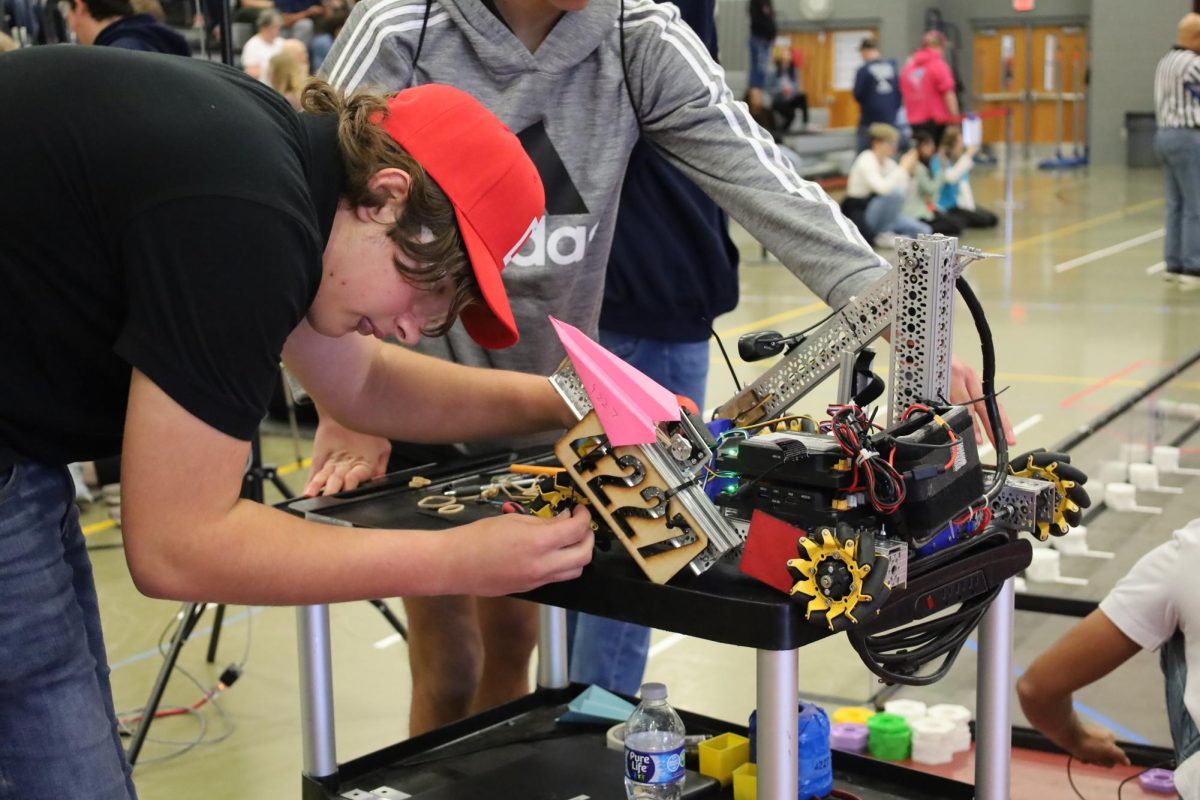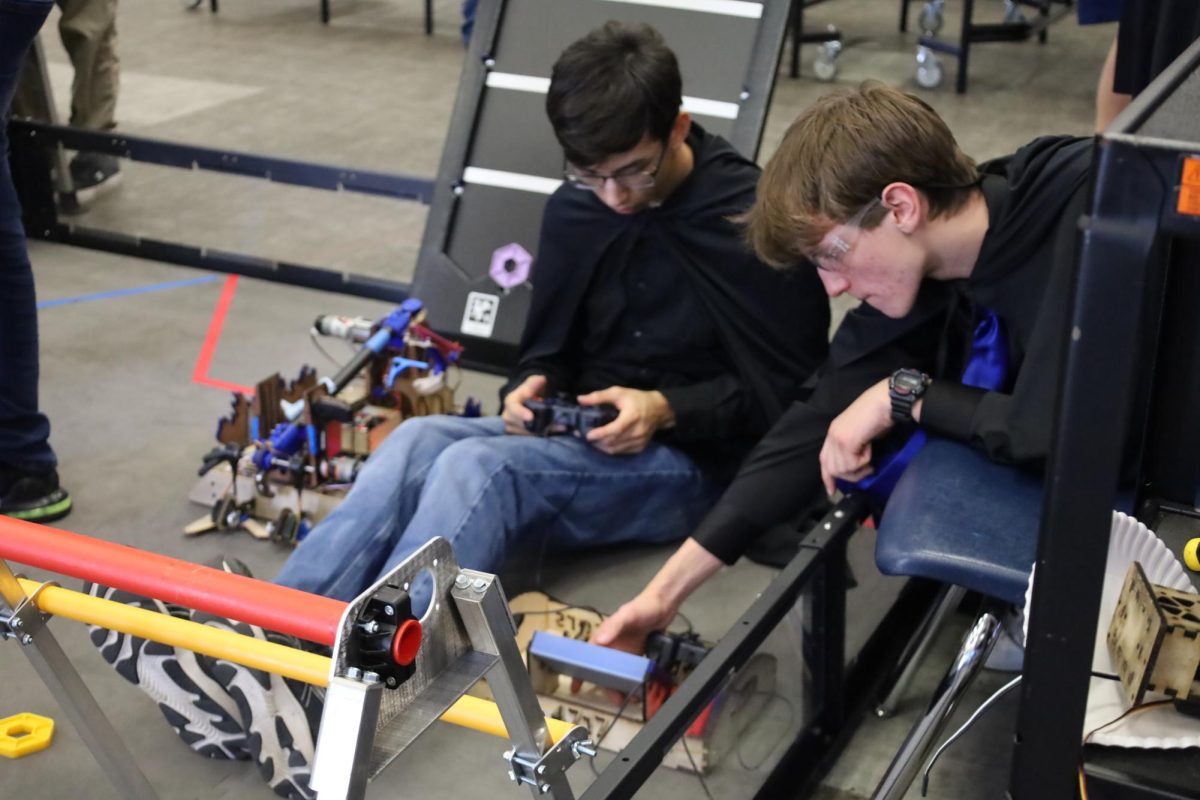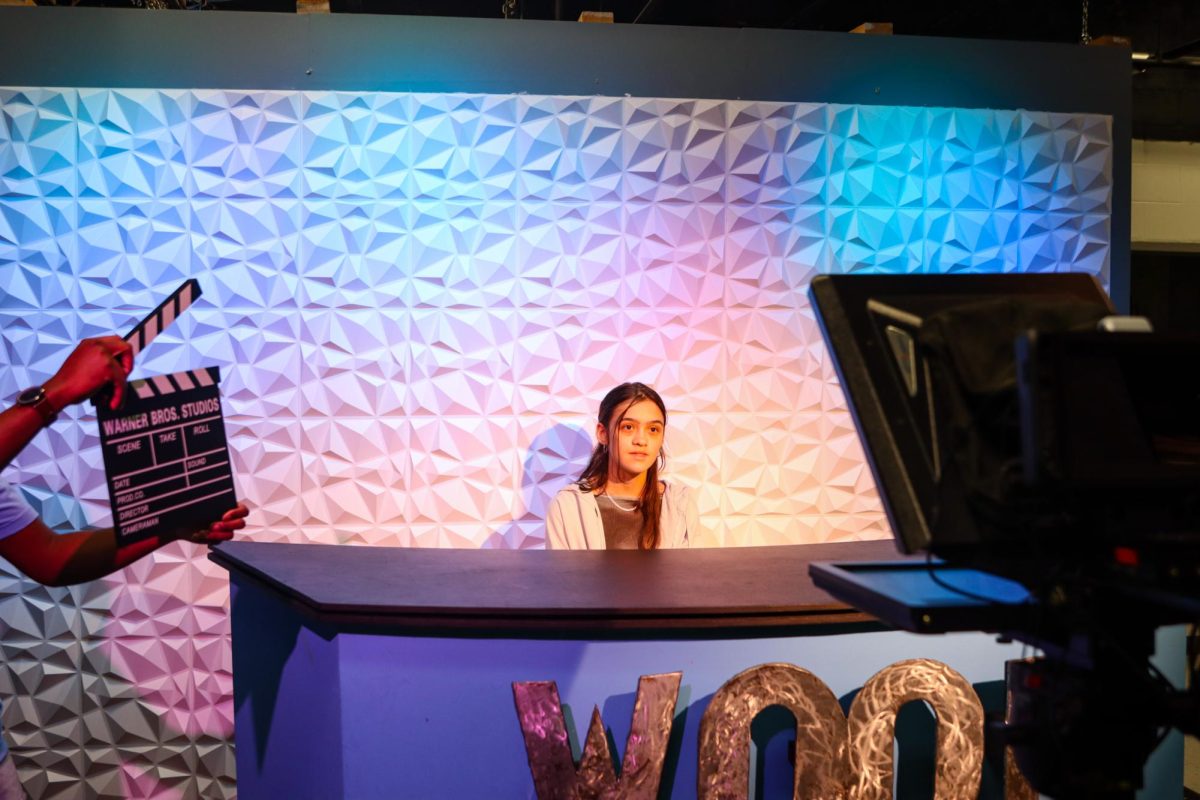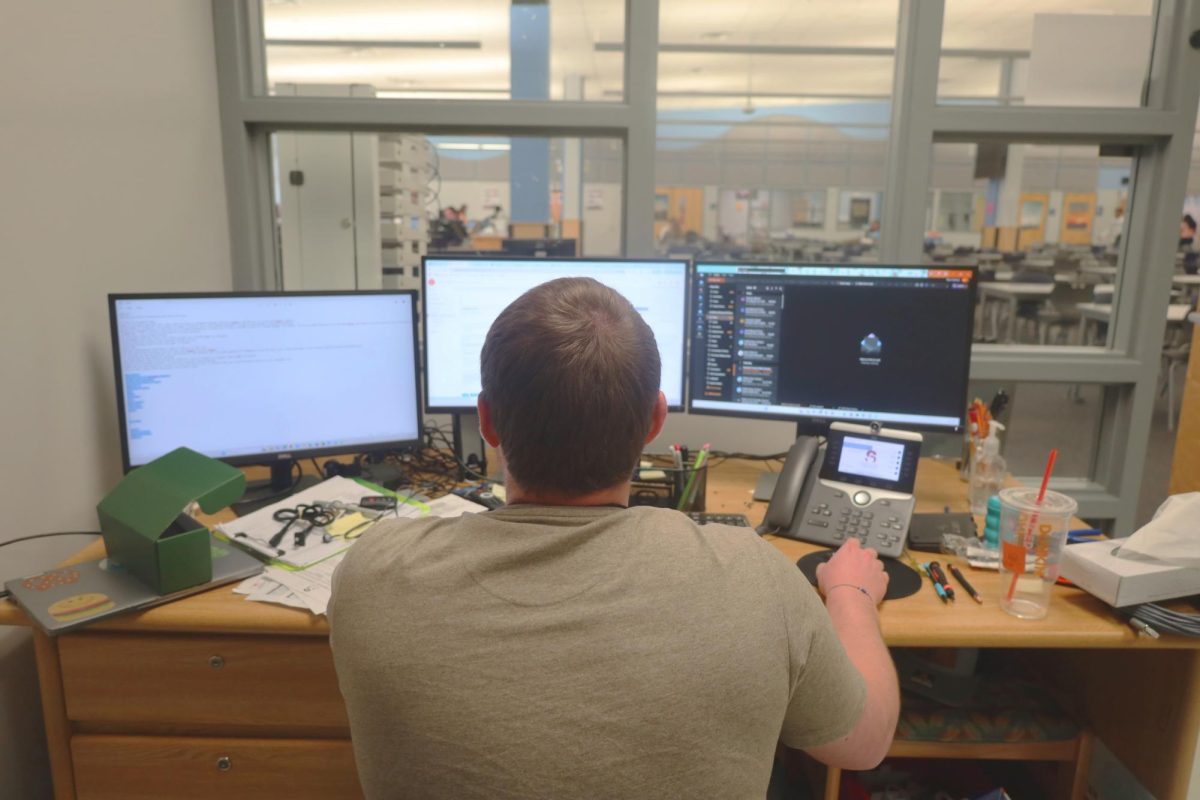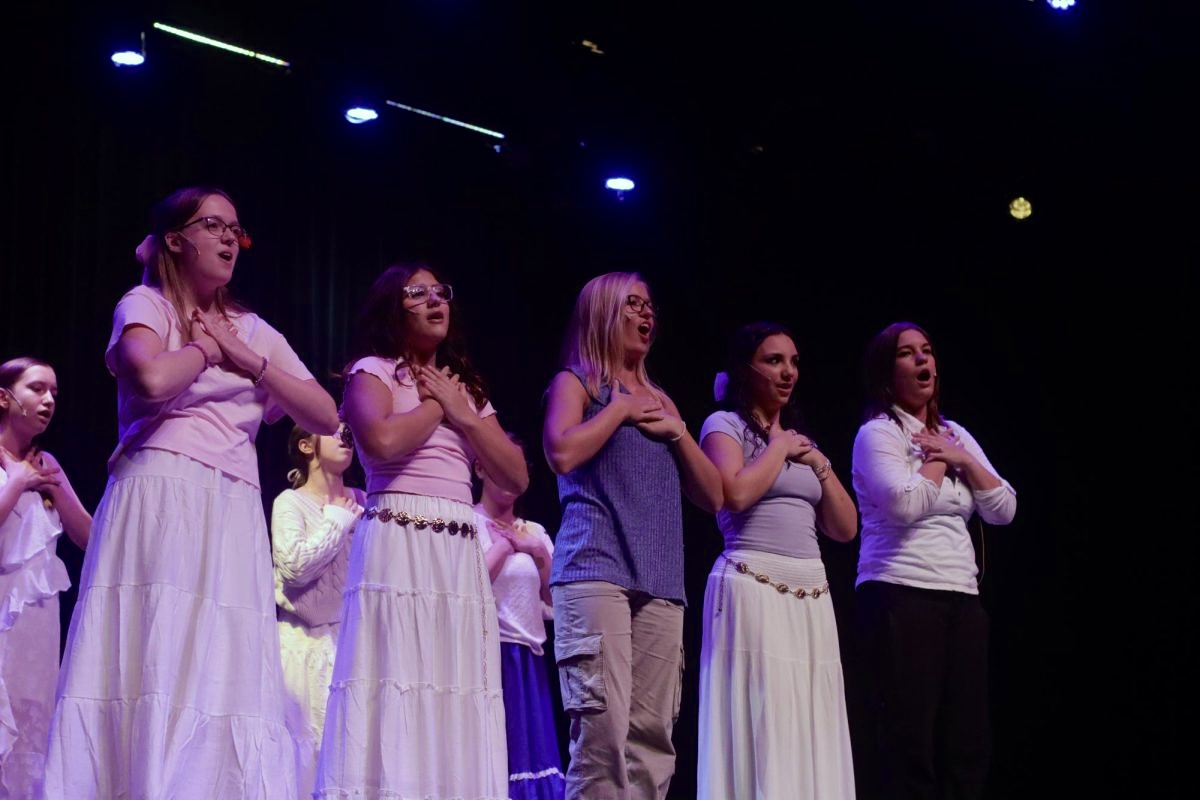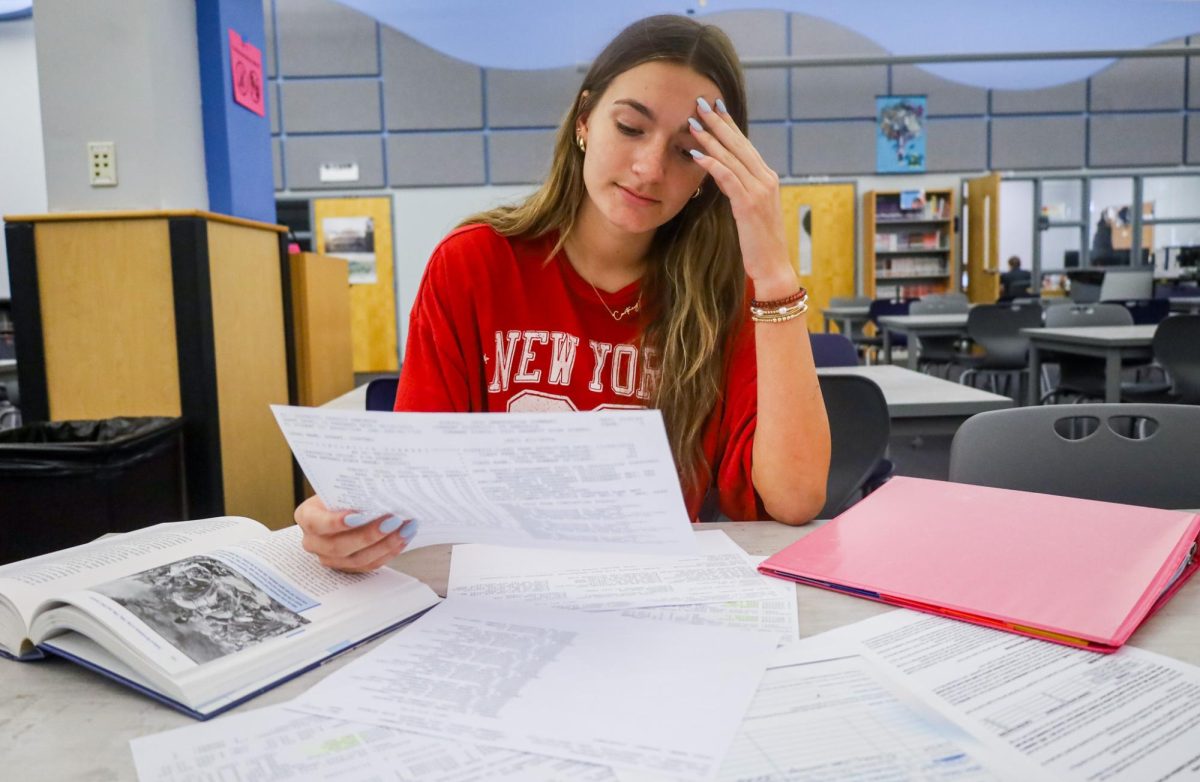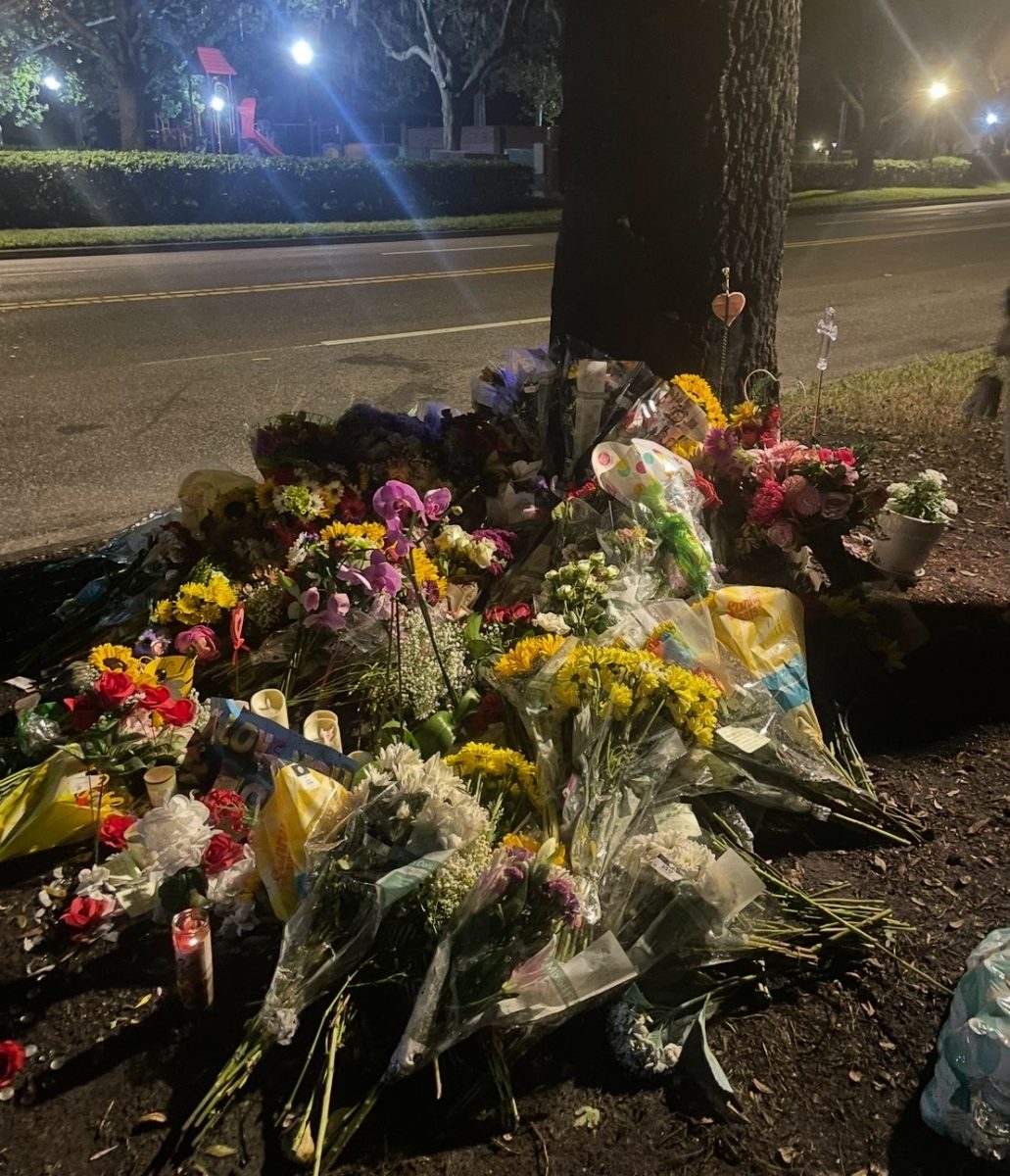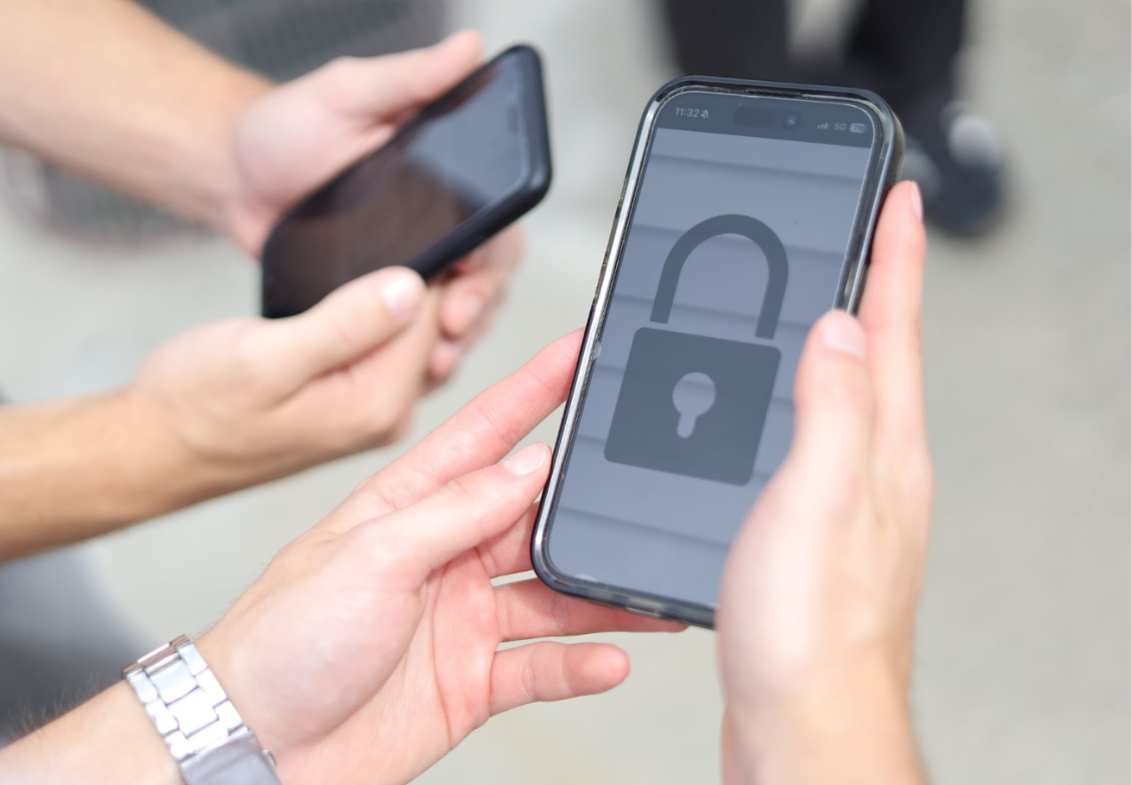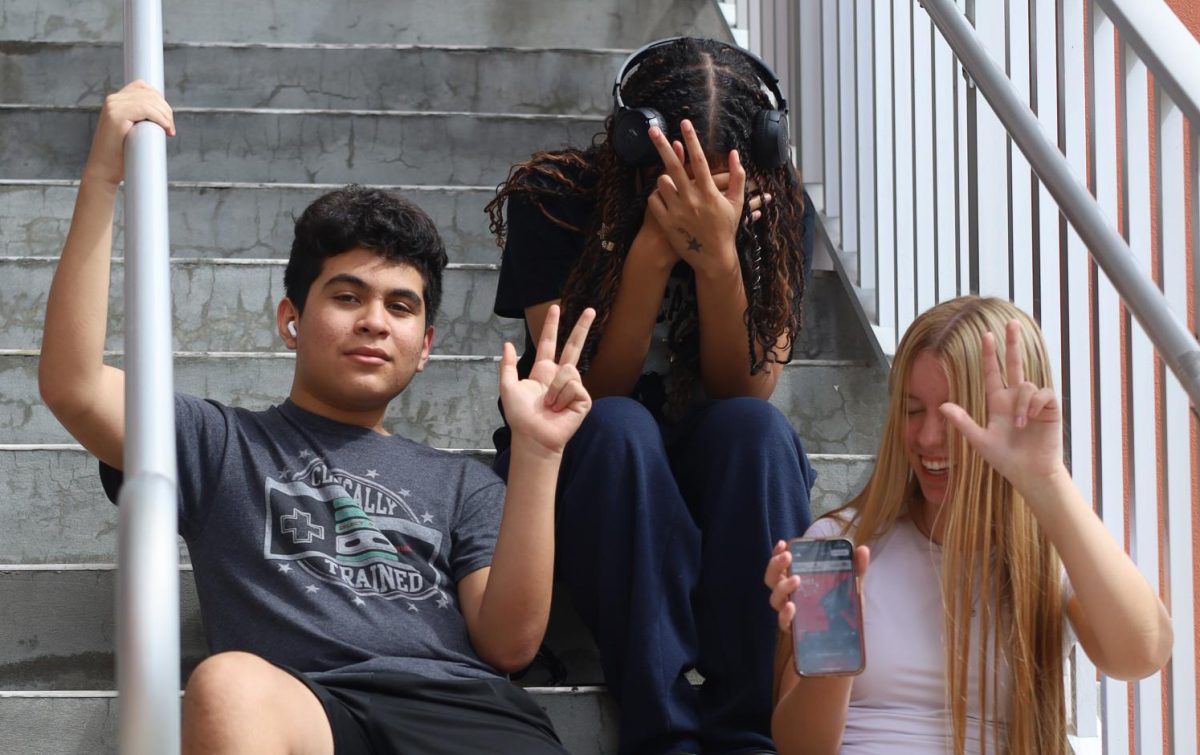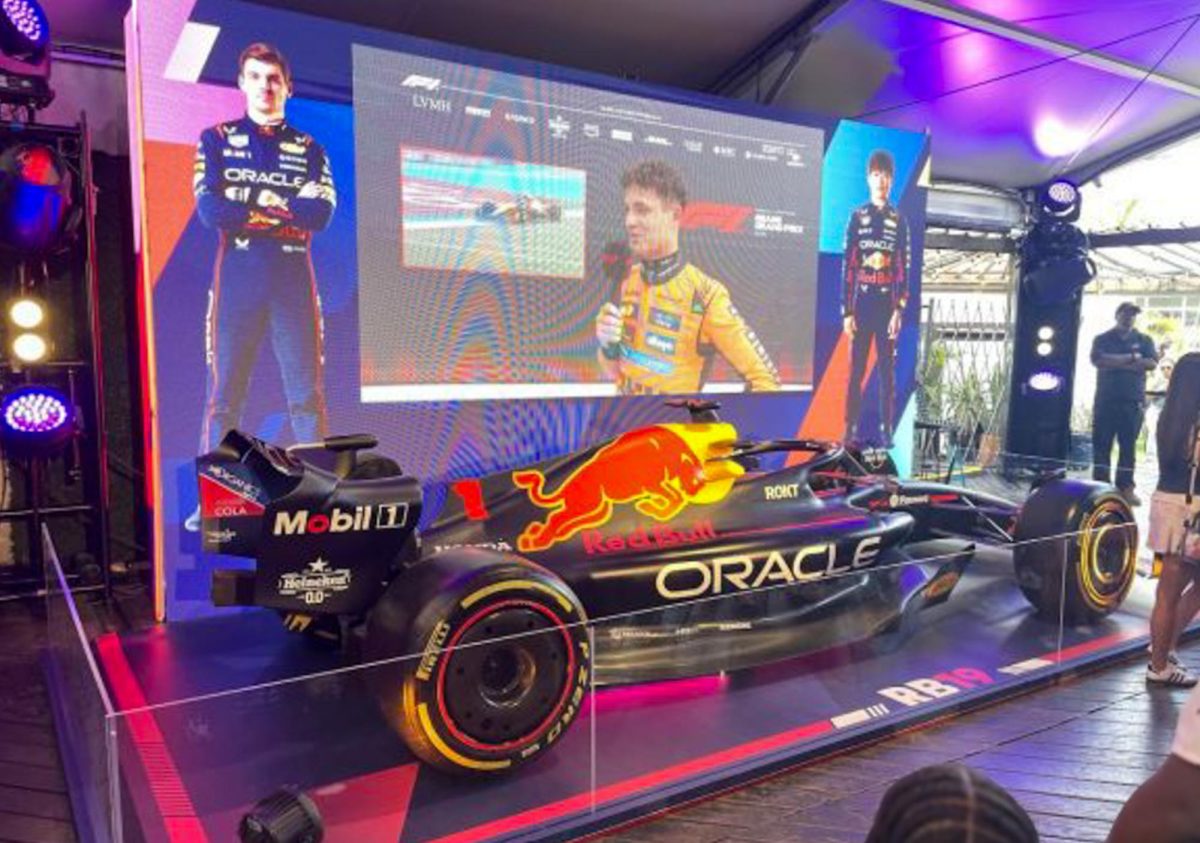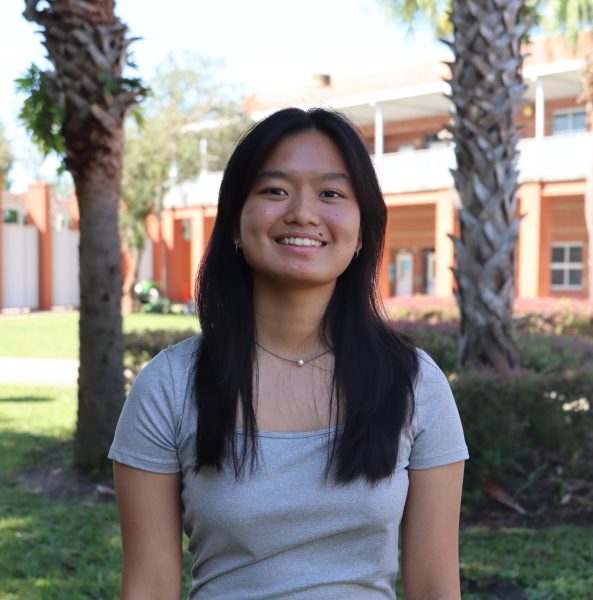While most people spent their Saturday morning sleeping in, junior Callan O’Connor walked into the school cafeteria with butterfly wings strapped to his back and toolbox in hand.
“I’m just really excited to be here,” O’Connor, who is part of robotics team 4227, said. “I’m so honored that we got to host the league championships, and I’m excited to see how all the other teams have progressed.”
On Feb. 3, Hagerty hosted the leagues robotics championships for the 13th year in a row. Gathering 23 teams from Seminole, Volusia and Brevard, the event serves as a precursor for going to states, with only six teams making it to the next round. Both school teams, team 4717 “The Mechromancers” and team 4227 “Metal Morphosis,” competed in the day’s matches but did not advance.
Following the rules set by First Tech Challenge leaders back in the beginning of the school year, the games started with six rounds of qualification matches. At the beginning of each match, four robots were set on a foam playing field enclosed by a plastic frame, and teams worked with their alliance member to gather cumulative points. Robots were tasked with placing plastic hexagonal discs, called pixels, onto a backboard, and bonus points were awarded for stacking the pixels into a mosaic pattern. During matches, teams could also gain points through other feats such as making their robot shoot a paper airplane or hang from a PVC pipe bar.
The Mechromancers started the day off strong, managing to stack three pixels into a mosaic and hang on the bar for the last few seconds of the match. In total, they accumulated a total of 123 points in their alliance, compared to the other teams’ 29 points.
On the other hand, Metal Morphosis experienced technical struggles early on in the competition, with their robot’s arm breaking halfway through the first qualification match. With the help of their alliance member, they were able to pull through with a 52-28 win for the match, but rushed to fix their robot afterward.
“[I had been] making sure the hardware works…so I didn’t have much time to program,” sophomore Ved Mahesh, who is a part of team 4227’s software division, said. “I just needed time.”
Once the qualification matches ended and the results were posted, the top teams got to select which teams would be part of their alliance in the final matches. From there, final and elimination matches were held.
“It’s the best and most intense two and a half minutes of your life six times,” robotics sponsor Po Dickison said. “I always joke and say I age a year after each match because you can’t control things like the battery going bad, it’s [just] a part of the game.”
After winning all of their qualification matches, team 4717 advanced to the semifinals as the captain of the Alliance Seed 1, while team 4227 was recruited onto Alliance Seed 3. Team 4717 managed to score a 15-point win in the first round of semifinal matches, but lost its second match by a mere seven points. With a record of 1-1, Alliance Seed 1 was tied with Alliance Seed 4, and a tiebreaker match ultimately resulted in team 4717’s elimination. Team 4227 experienced similar heartbreak as Alliance Seed 3 finished with a semifinal record of 0-2.
“It’s all [about] strategy. It’s frustrating sometimes, but there’s also a lot of learning going on,” Dickison said.
In addition to their robot’s performance in matches, teams were judged based on their community impact and documentation of the design process. From bright poster boards and display racks to personalized team memorabilia, the league championships are a time for teams to showcase their last six months of work.
In this way, Mahesh finds the competition beneficial not only for himself, but the younger generations as well.
“It’s just really fun and it helps raise awareness in the community about cool things like software and hardware and what they can do for robotics,” Mahesh said. “It inspired me to do software for my future career, and so [I hope] it can help other kids learn a lot as well.”

However, the preparation leading up to the competition was not all fun and games. Junior Jorge Jordan, part of the hardware division of team 4717, struggled through multiple iterations and prototypes to build an arm that could effectively pick up pixels.
“The Space Coast League and Oviedo in general is super competitive,” Jordan said. “You have to get very creative [because] there’s a lot of ways of tackling things right.”
For the members of team 4227, creative solutions are the inevitable results of their diverse team, but it takes effort to incorporate everyone’s ideas.
“Communication as a team has been a bit of a struggle [with] making sure everyone’s on the same page, but we’ve been getting a lot better at it lately,” O’Connor said. “I am nothing without my team, and I’m proud of them no matter what.”
Despite showcasing skills worthy of a Control Award (which is awarded based on a robot’s uniqueness), ultimately, neither team 4717 or 4227 were able to move on to states. The results of the final matches, as well as other factors like team presentations and quality of outreach, left them out of the advancing top six.
Although disappointed, Dickison is proud of her students regardless of their ranking, choosing to focus on their progress over perfection.
“Winning is fun, but showing gracious professionalism, good sportsmanship and the friendships that the kids make [on the way] are just as important,” Dickison said.

